#Secrets #Antique #Furniture #Hidden #Compartments
Introduction: A Hidden World Beneath the Surface
Antique furniture tells stories—of craftsmanship, history, and often, mystery. Some of the most fascinating pieces in any collection are those that hold secret compartments, cleverly integrated into their design. These hidden spaces weren’t just curiosities; they served practical—and sometimes political—purposes. From Biedermeier secretaries with concealed drawers to Louis XVI-style cabinets hiding miniature safes, these objects offer a glimpse into the ingenuity of the past.
At Styylish, we curate pieces where elegance meets clever design. In this post, we explore the hidden world of antique furniture with secret compartments—and why these details still capture the imagination of collectors today.
Why Secret Compartments Were Designed in Antique Furniture
Hidden compartments weren’t just whimsical flourishes. Historically, they served serious functions:
-
Security: In eras without safes or digital locks, a well-disguised drawer could protect gold, love letters, or official documents.
-
Privacy: Nobility and the bourgeoisie valued discreet spaces to store correspondence or keepsakes.
-
Espionage & Resistance: During periods of unrest—like the Napoleonic Wars or later European revolutions—furniture sometimes concealed political documents or coded messages.
-
Design Prestige: A piece with secret compartments demonstrated a cabinetmaker’s skill, elevating it from functional to extraordinary.
The Secretary Desk: Master of Disguise
One of the most iconic pieces associated with hidden compartments is the antique secretary desk. Often appearing modest at first glance, these desks frequently contain:
A fine example is the Biedermeier secretary desk, known for its clean lines and focus on function. Behind its minimalist exterior, you’ll often find interior architecture that includes more than meets the eye.
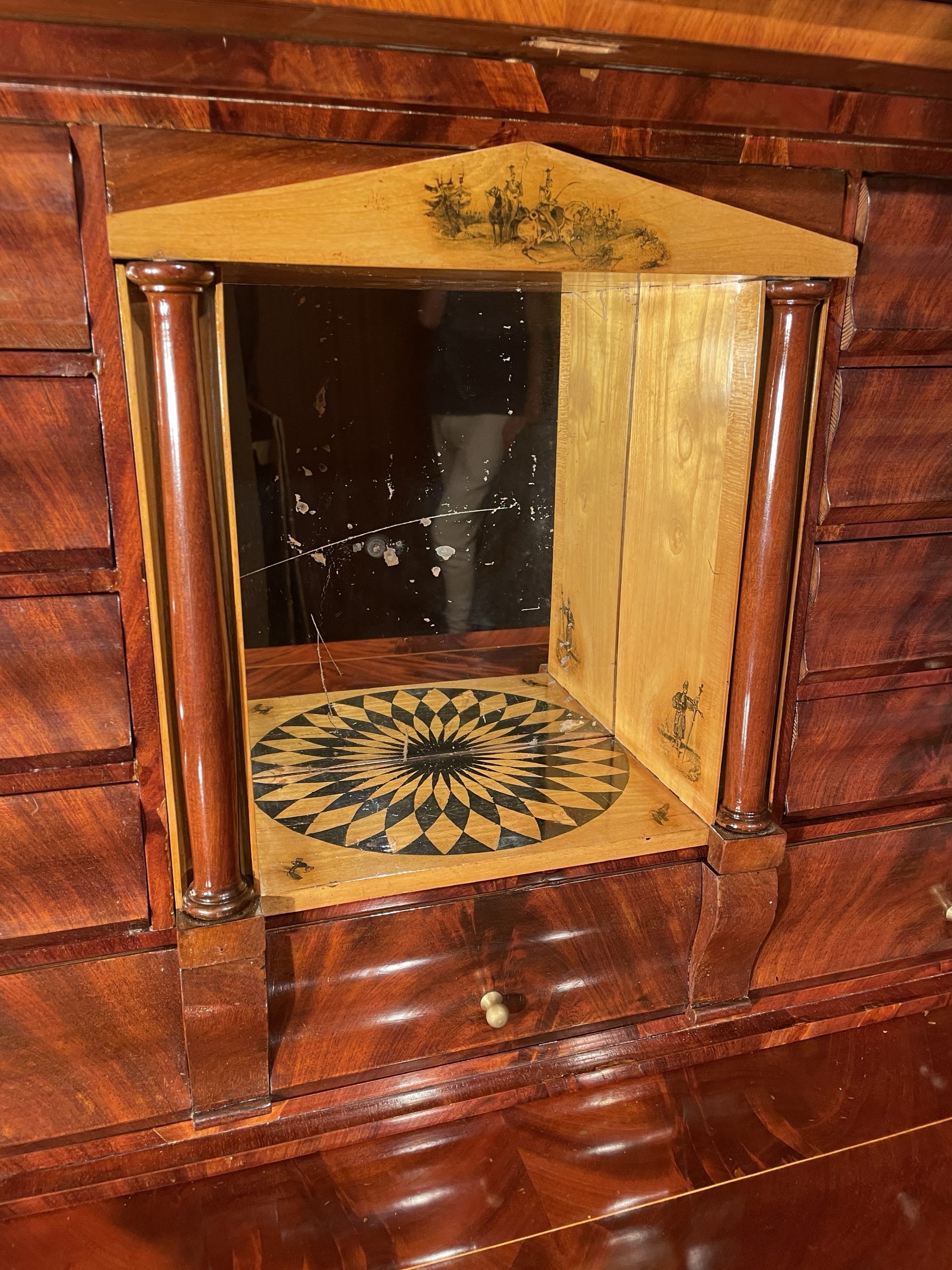
Chests and Cabinets: Hiding in Plain Sight
While desks are an obvious candidate for secret spaces, antique cabinets, commodes, and chests also played host to hidden compartments.
In 18th- and 19th-century French furniture, especially in Louis XV and Louis XVI styles, designers often incorporated double drawers, false bottoms, and hidden locks behind decorative mounts. The beauty of these pieces lies not only in their marquetry or ormolu—but in the mechanical puzzles they sometimes conceal.
A Louis XVI-style commode might include a panel that slides sideways to reveal a small locked space. In some Dutch or German Baroque pieces, large chests featured removable moldings or side panels hiding additional storage—ideal for securing valuables during travel or in less secure homes.
Tables with a Twist: Ingenious Design in Everyday Pieces
Even seemingly simple tables sometimes include surprising hidden features. Consider:
-
Tea tables with rotating tops that conceal card compartments or mini bars.
-
Writing tables with retractable lids hiding ink wells, stamps, or mini drawers.
-
Game tables with liftable tops, offering storage beneath the surface or even dual purposes (backgammon on one side, chess on the other).
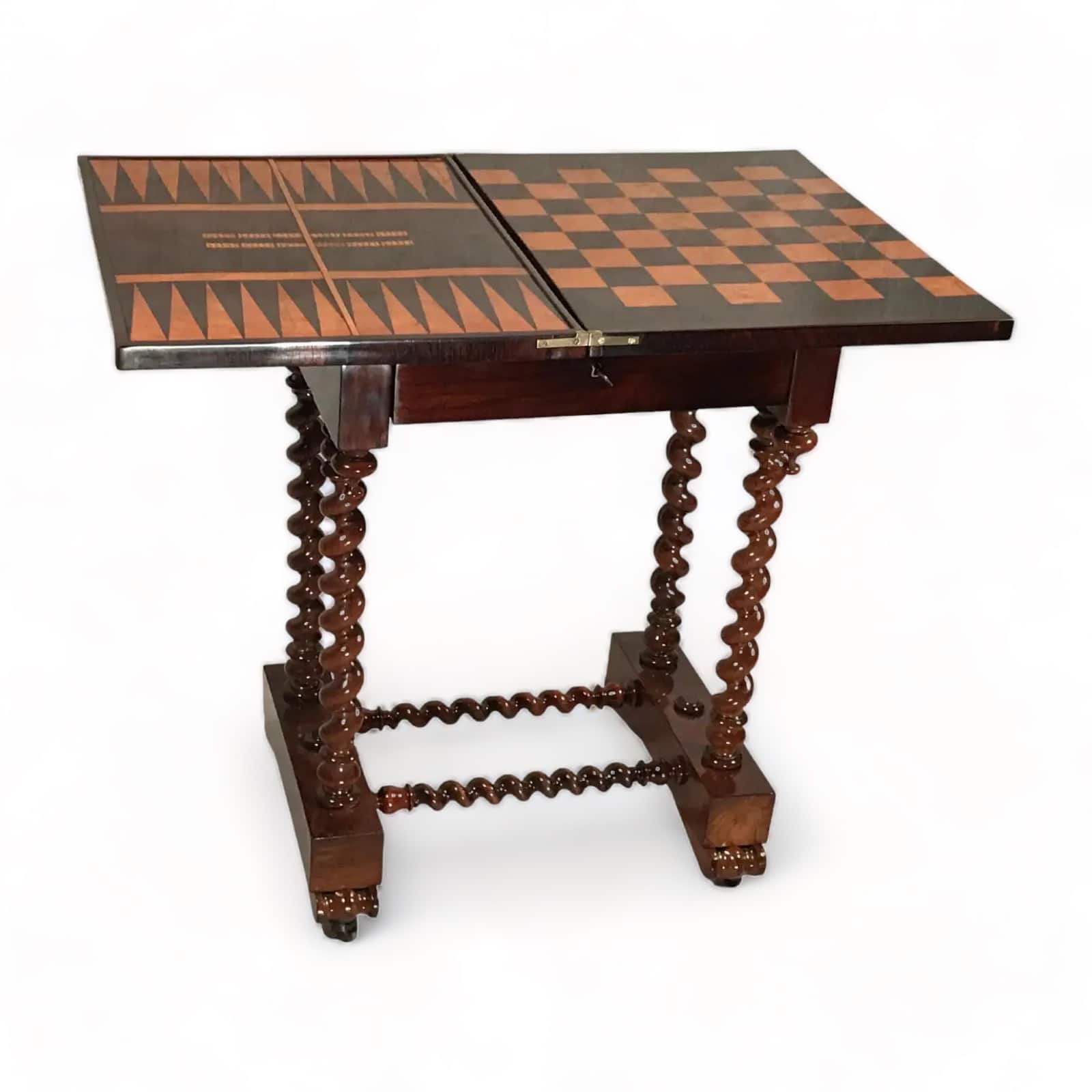
Victorian Game Table- Available on Styylish
These pieces reflect not just clever construction, but a lifestyle where multifunctionality met refined aesthetics. For today’s collector, such pieces offer both beauty and a delightful sense of discovery.
Modern Appreciation for Antique Ingenuity
Why does antique furniture with hidden compartments continue to fascinate modern buyers?
-
Conversation Pieces: These antiques often become the focal point of a room—especially when demonstrated to guests.
-
A Sense of Whimsy and History: They connect us to a more romantic, tactile past. In an age of digital security, there’s something magical about a drawer hidden behind marquetry.
-
Practical Value: Even today, a concealed drawer offers discreet storage—perfect for jewelry, passports, or private notes.
At Styylish, we’re seeing increased interest in pieces that are not only beautiful but ingeniously built. Buyers are drawn to the craftsmanship and the stories waiting to be uncovered.
Secrétaire à la Bourgogne: A French Classic with Discreet Charm
Among the more refined and regionally distinctive pieces of French furniture is the Secrétaire à la Bourgogne—a term that refers to a specific type of writing cabinet originating from or inspired by the Burgundy (Bourgogne) region of France. These secretaires often date back to the late 18th or early 19th century and are known for their upright, rectangular form with a drop-front writing surface and multiple inner drawers.
The name reflects not only its geographic association but also a particular style—marked by austere elegance, rich wood veneers like walnut or cherry, and a well-organized interior. True to French cabinetmaking tradition, these pieces were designed with both aesthetic restraint and functional sophistication.
What makes the Secrétaire à la Bourgogne particularly fascinating are the discreet interior compartments, often hidden behind removable panels or integrated into symmetrical drawer arrangements. These secret storage spaces were ideal for concealing personal documents or valuables and are a testament to the thoughtfulness of period design.
Today, owning such a piece means possessing a slice of French regional history, complete with the charm of antique craftsmanship and the mystery of its cleverly concealed interiors.
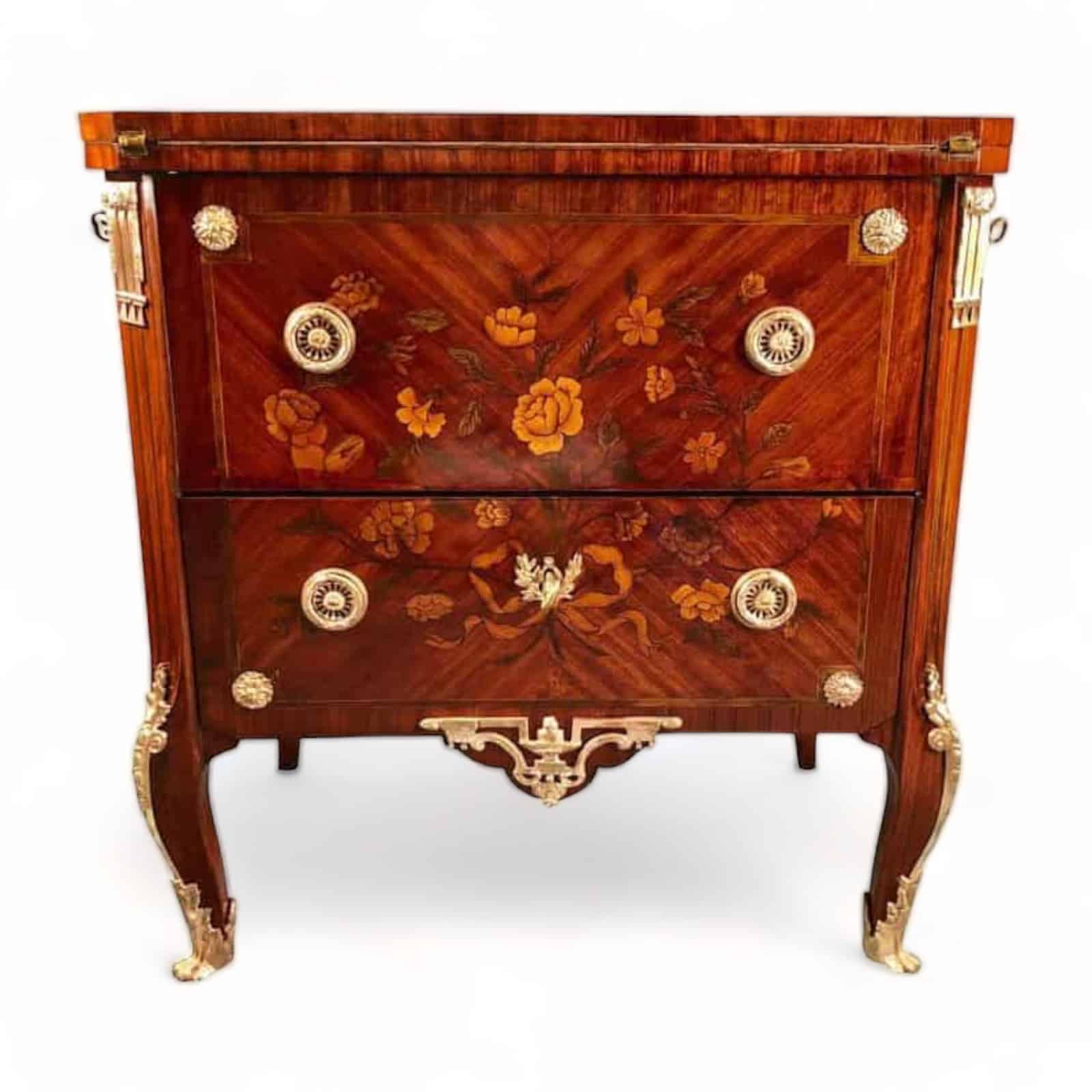

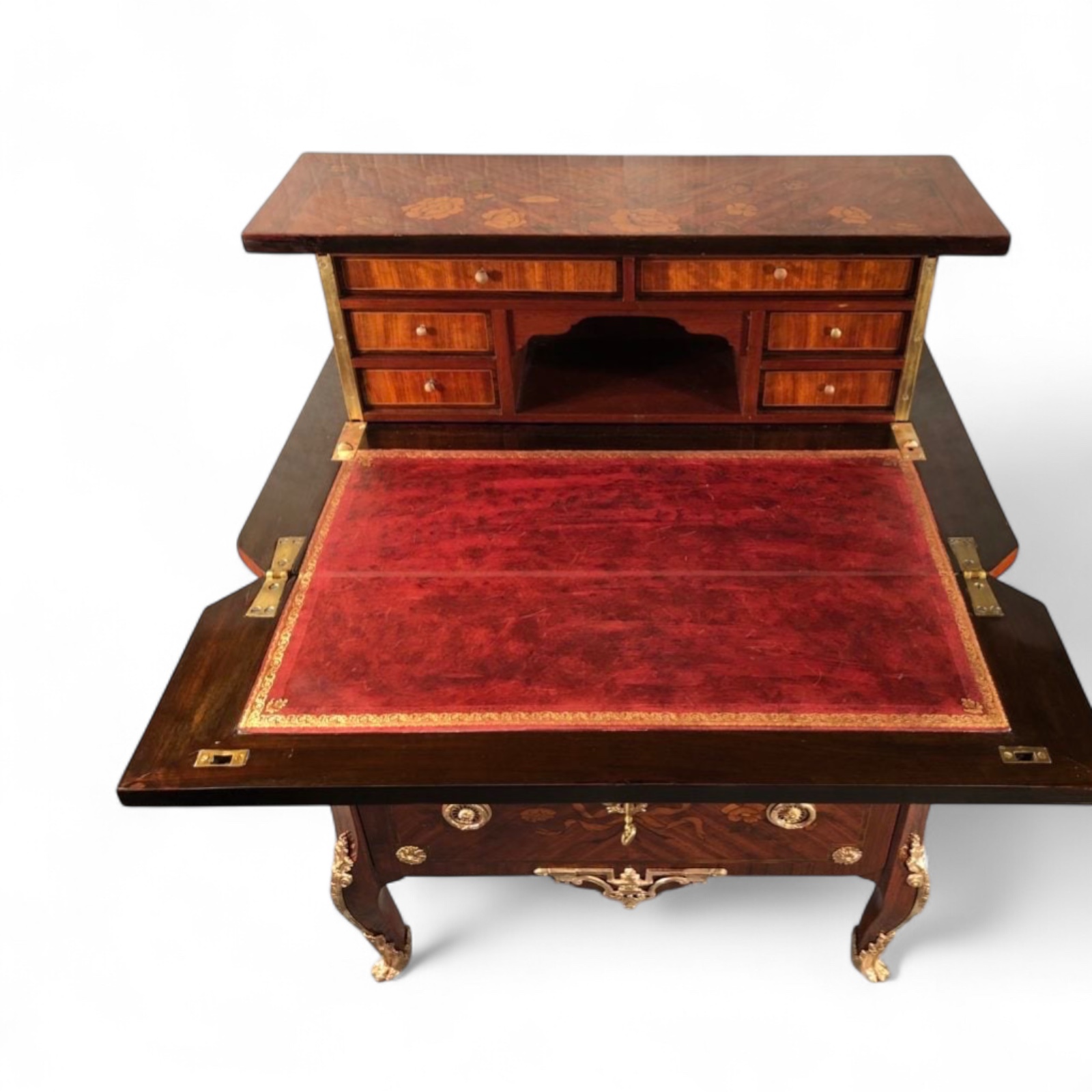

A Few Favorite Examples from Styylish
Here are some exquisite examples of clever antique design with hidden compartments, available on Styylish:
- Empire Drop-Front Desk with Secret Drawers: With a polished cherrywood exterior, this desk opens to reveal not only writing compartments but a concealed space behind a false panel—ideal for storing personal correspondence.
- Secrétaire à la Bourgogne with Discreet Storage: This refined piece blends architectural structure with elegant restraint, typical of late 18th to early 19th-century French design. Behind its clean lines and polished veneer, the secrétaire conceals a secretary desk with a series of interior drawers. Originally used to store private letters, valuable documents, or ledgers, its discreet design reflects the balance of function and elegance. A true showcase of clever compartmentalization in antique furniture.
- Louis XVI Secretary Desk, South Germany 1770-80
A stunning Louis XVI secretary desk from South Germany (circa 1770-1780), a true masterpiece of late Baroque and early Neoclassical furniture design. This antique bureau features three spacious drawers, two small drawers and a writing flap. Inside the writing compartment, you’ll find nine drawers, open compartments, and a hidden secret compartment at the back. -
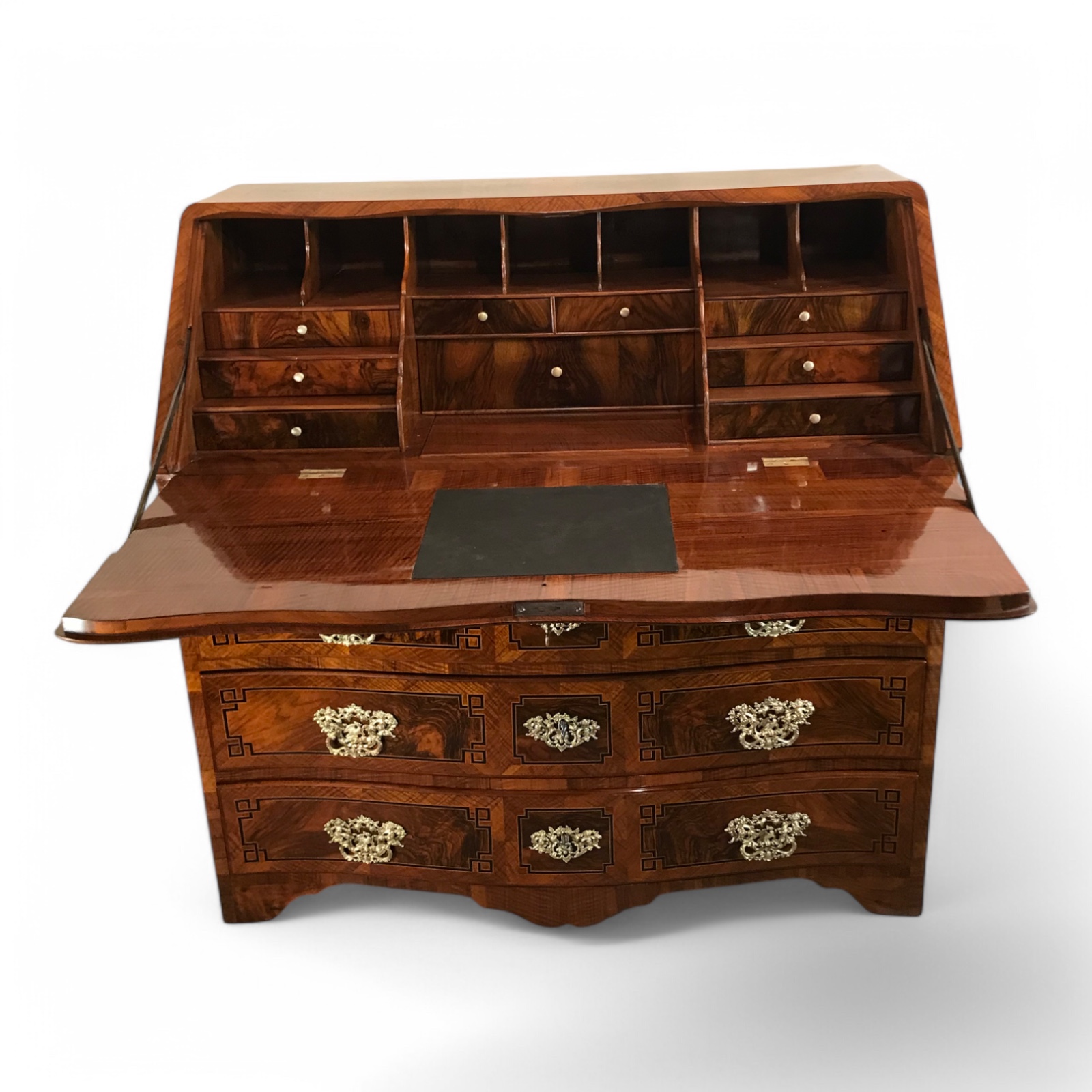
Louis XVI Secretary Desk- available on Styylish -
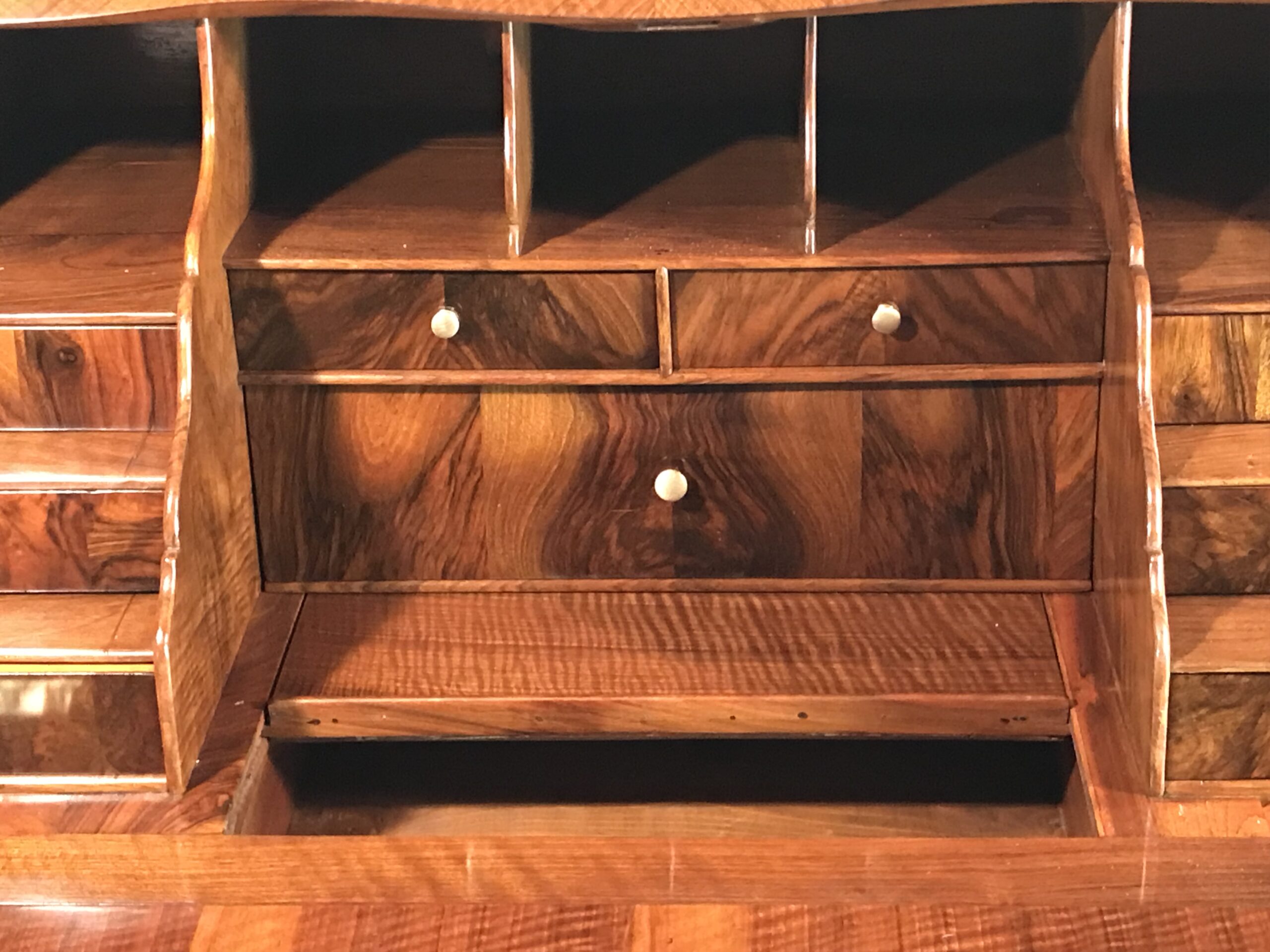
Louis XVI Secretary Desk, inside with a secret compartment- available on Styylish
Tips for Collectors: How to Spot Hidden Compartments
When browsing antique pieces, especially in person, look for:
-
Unusual gaps in the wood grain or structure
-
Slightly raised moldings or panels
-
Inconsistencies in hardware spacing
-
Lock mechanisms with no apparent keyhole
-
Clues from symmetry—many pieces are built around balance, and a “missing” element may hint at a secret
That said, don’t attempt to force open compartments if unsure—these mechanisms are delicate, and professional help is best for unlocking them safely.
Conclusion: Elegance Meets Enigma
Antique furniture is more than historical decoration—it’s a testament to the creativity and ingenuity of past artisans. Pieces with hidden compartments and clever design remind us that great design serves both beauty and purpose. Whether you’re seeking a dramatic focal point, a discreet storage solution, or simply the joy of uncovering a well-kept secret, these antiques offer timeless charm.
At Styylish, we celebrate not only the visible craftsmanship of fine furniture—but also the hidden marvels beneath the surface.


